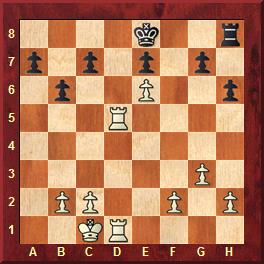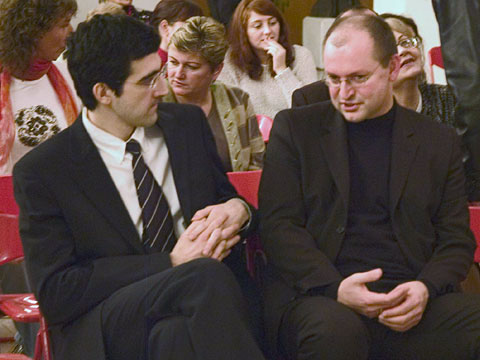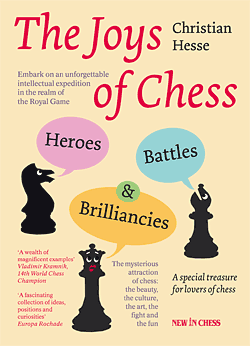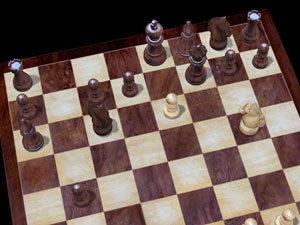Until 1561 castling was two separate moves. –Bill Wall: Brief Notes on the History of Chess
The rule about castling, as we know it today, was introduced around 1600, including parallel local special forms such as free castling, which did not disappear until late in the 19th century. However, at the start castling did not have a good reputation and was seldom used; early manuals even specifically advised against it. Nowadays, according to empirical investigation, castling is used in approximately 99% of all games.
How highly differentiated chess culture has become and how interesting the business of castling can be may be seen from the fact that there is even a chess magazine on the market dealing with nothing else but castling activities: König und Turm (King and Rook), edited by Hanspeter Suwe, and appearing three times per year.
That the act of castling is not all that simple can be seen from the incident when, in game 21 of the 1974 Candidates’ finals against Karpov, even vice World Champion Viktor Kortchnoi had to consult the arbiter as to whether in his position – with an opposing piece attacking his rook – it was permissible to castle with the said rook.

White to move: can he castle?
It is natural but false to consider castling simply as a routine defensive move, the purpose of which is merely to put the king in safety behind a pawn chain and near the corner of the board. We shall demonstrate by means of some selected models how castling can potentially be very much an offensive move and can fit in with attacking ideas. Firstly, let us present castling as an aggressive and even a directly decisive attacking move. It brought to an abrupt end the game:

[Event "Liege"] [Site "?"] [Date "1934.??.??"] [Round "?"] [White "Feuer, Ivan"] [Black "O'Kelly de Galway, Alberic"] [Result "1-0"] [ECO "C73"] [Annotator "SB/54-26 Krabbe"] [PlyCount "25"] [EventDate "1934.??.??"] 1. e4 e5 2. Nf3 Nc6 3. Bb5 a6 4. Ba4 d6 5. Bxc6+ bxc6 6. d4 f6 7. Nc3 Rb8 8. Qd3 Ne7 9. h4 h5 10. Be3 Rxb2 11. dxe5 dxe5 12. Qxd8+ Kxd8 {[#]} 13. O-O-O+ $1 {Queenside castling with check and a simultaneous attack on the b2 rook wins the exchange and the game.} 1-0
Our second piece is a little tour de force in which castling plays the role of the saving, sacrificial move. It comes from the book De Rochade, een Veelzijdige Schaakzet by Dutch author Robert Timmer:

[Event "Tel Aviv olympiad"] [Site "?"] [Date "1964.??.??"] [Round "1"] [White "Mora, Federico"] [Black "Suttles, Duncan"] [Result "1/2-1/2"] [ECO "B06"] [PlyCount "32"] [EventDate "1964.??.??"] 1. e4 g6 2. h4 Bg7 3. Nc3 Nc6 4. h5 d6 5. Bc4 Nd4 6. d3 Nh6 7. Bxh6 Bxh6 8. Nge2 Bg4 9. hxg6 hxg6 10. Qc1 Bh5 11. f4 e5 12. Nxd4 Bxf4 {Just 12 moves have been made, but already White is facing grave problems. His queen and knight are being threatened, he is a pawn down and the opposing bishop pair is exercising a crippling influence on his set-up. Black seems to have everything his way and White appears lost. But an operation starting with castling will come to his rescue:} 13. O-O $1 Bxc1 ({If Black continues with} 13... g5 {then after} 14. Qe1 exd4 15. Nd5 Be5 16. Qf2 Bg6 17. Nf6+ {White gets a nice initiative as compensation for the pawn. Both sides then have their chances.}) 14. Bxf7+ Kd7 15. Be6+ Ke8 16. Bf7+ {and White has reached the safe haven of a draw.} Kd7 ({One can hardly recommend Black with a clear conscience to continue playing for a win with} 16... Kf8 17. Ne6+ Ke7 18. Nd5+ Kd7 19. Nxd8 Bxb2 20. Be6+ Kxd8 21. Rf7) 1/2-1/2
At this point we are struck with a question: is there also a magnificent castling? Can castling represent a brilliant feat? Is there 0-0!!! or 0-0-0!!! ? Unequivocally yes! But it is also very rare! However, we have found two sensational examples of premium castling. In the first case, castling brings about a queen sacrifice and there develops a dazzling attack which finally breaks through.

[Event "Warsaw"] [Site "?"] [Date "1844.??.??"] [Round "?"] [White "Hoffmann, Fr. Alexander"] [Black "Petrov, Alexander Dmitrievic"] [Result "0-1"] [ECO "C53"] [Annotator "YB/80-24 Sosonko"] [PlyCount "40"] [EventDate "1844.??.??"] 1. e4 e5 2. Nf3 Nc6 3. Bc4 Bc5 4. c3 Nf6 5. d4 exd4 6. e5 Ne4 7. Bd5 Nxf2 8. Kxf2 dxc3+ 9. Kg3 cxb2 10. Bxb2 Ne7 11. Ng5 Nxd5 12. Nxf7 {Petrov now astonishes his opponent with a real gem of a short castling:} O-O $3 {Queen sacrifice! By far the best and an immediately decisive procedure.} ({It costs much less effort than} 12... Qe7 13. Qxd5 Rf8 14. Rf1 Rxf7 15. Qxf7+ Qxf7 16. Rxf7 Kxf7 {because then Black would still have to fiddle about with an endgame. }) 13. Nxd8 {There is no rescue in sight for White. After the knight move, Black even has a forced mate on the board.} Bf2+ 14. Kh3 d6+ 15. e6 Nf4+ 16. Kg4 Nxe6 17. Nxe6 Bxe6+ 18. Kg5 Rf5+ 19. Kg4 h5+ 20. Kh3 Rf3# 0-1
The position in our next example is smouldering like a bush fire. In the first ten moves both sides have been going at it hammer and tongs. The black queen is under a double threat. A black pawn can reach the queening square by taking a rook.

[Event "Leipzig"] [Site "Leipzig"] [Date "1973.??.??"] [Round "?"] [White "Thomas Espig"] [Black "Guenther Moehring"] [Result "0-1"] [ECO "C44"] [PlyCount "50"] [EventDate "1973.??.??"] [SourceDate "2013.10.12"] 1. e4 e5 2. Nf3 Nc6 3. d4 exd4 4. c3 dxc3 5. Bc4 b5 6. Bb3 b4 7. O-O Ba6 8. Re1 Qf6 9. e5 Qf5 10. Ng5 cxb2 11. Bxf7+ Qxf7 12. e6 {Cool as a cucumber, Möhring castles queenside. Just as if the opposing pieces were not even on the board and as if he had failed to register all the important possible motifs.} O-O-O $3 {A splendid move from Caissa's box of tricks. You need Olympian calm to be able to play such a tranquil move in this situation. Castling kills off all of White's illusions. It is not only the one move which wins for Black, but it is also the single move which does not lose,} ({e.g.} 12... dxe6 13. Bxb2 Qd7 14. Qh5+ g6 15. Qf3 O-O-O 16. Nf7 Be2 17. Qxe2 Qxf7 18. Bxh8 {should be enough for White,}) ({and even more so} 12... Qxf2+ 13. Kxf2 Bc5+ 14. Kg3 Bd6+ 15. Kh3 $1 bxa1=Q 16. exd7+ $1 Kf8 17. Qd5) 13. Bxb2 Qf5 14. Nf7 dxe6 15. Nxd8 Nxd8 {The dust has settled and Black is better positioned all along the line, Fritz reckons by 2.59 pawns. A mere question of technique.} 16. Nd2 Nf6 17. Rc1 Bb7 18. Be5 Nd5 19. Qa4 Nc3 20. Bxc3 bxc3 21. Rxc3 Bc5 22. Nf3 Rf8 23. Rd1 Nf7 24. h3 $2 Ne5 25. Rb3 Bb6 {and White resigns. He is about to sustain a loss of material and his king's position will be in smithereens. The tide was turned by brilliant castling} 0-1
To end this chapter, let us take another short excursion into the realm of chess problems. In that world, as is well-known, there is the convention that castling is always allowed, except if it can be proved from the position that it is forbidden, because either the king or the rook must already have moved.
From this point of view, consider the problem set out in diagram 424, in the solution of which castling considerations will play an essential role:

Position after 1.0-0-0. No matter what
Black’s next move is, White mates in one move.
One cannot see how there can be a mate if Black brings his king into safety by castling. But is there any real guarantee that Black is able to castle? There isn’t! Just the opposite is the case. It can be proved beyond a shadow of a doubt that the very fact that White has just castled queenside eliminates the right to castle for Black. The proof runs along these lines: since White was able to castle, the rook on d5 did not come from h1 (or g1 or f1). So we are talking about a promoted pawn. The latter can have got through via d7 or f7 or via b7 or h7. But, no matter where along the back rank it promoted, the new rook must have got back to d5 via either d8 or f8. Then the black king would have been in check on e8, and since it obviously did not take the rook, it must have moved to get out of check. This cost it its right to castle. So White continues with the quite elementary mate Rd8, no matter how Black reacts to 1.0-0-0.
Note: The Joys of Chess contain an extensive seven-page list of bibliography with references to works that were used in researching its 94 essays. This list is not included here with the above sample chapter.
Christian Hesse holds a Ph.D. from Harvard University and was on the faculty of the University of California at Berkeley until 1991. Since then he is Professor of Mathematics at the University of Stuttgart (Germany). Subsequently he has been a visiting researcher and invited lecturer at universities around the world, ranging from the Australian National University, Canberra, to the University of Concepcion, Chile. Recently he authored “Expeditionen in die Schachwelt” (Expeditions into the world of chess, ISBN 3-935748-14-0), a collection of about 100 essays that the Viennese newspaper Der Standard called “one of the most intellectually scintillating and recommendable books on chess ever written.”

Christian Hesse in November 2005, in Moscow's Tretjakov Gallery with
Vladimir Kramnik when he was still World Champion
Christian Hesse is married and has a twelve year old daughter and a nine year old son. He lives in Mannheim and likes Voltaire's reply to the complaint: ”Life is hard” – “Compared to what?”.
 The Joys of Chess is an unforgettable intellectual expedition to the remotest corners of the Royal Game. En route, intriguing thought experiments, strange insights and hilarious jokes will offer vistas you have never seen before.
The Joys of Chess is an unforgettable intellectual expedition to the remotest corners of the Royal Game. En route, intriguing thought experiments, strange insights and hilarious jokes will offer vistas you have never seen before.
The beauty, the struggle, the culture, the fun, the art and the heroism of chess – you will find them all in this sparkling book that will give you many hours of intense joy.
Christian Hesse is a Harvard-trained professor of Mathematics who has taught at the University of California, Berkeley (USA), and since 1991 at the University of Stuttgart. He has written a textbook called 'Angewandte Wahrscheinlichkeitstheorie'.
Chess and literature are his main hobbies, and he also likes fitness and boxing. His heroes are the ones who fall to the bottom and rise again, fall and rise again…
From the foreword by by Ex-World Champion Vishy Anand: "A rich compendium of spectacular highlights and defining moments from chess history: fantastic moves, beautiful combinations, historical blunders, captivating stories, and all this embedded into a plentitude of quick-witted ideas and contemplations as food for thought."






















 The Joys of Chess is an unforgettable intellectual expedition to the remotest corners of the Royal Game. En route, intriguing thought experiments, strange insights and hilarious jokes will offer vistas you have never seen before.
The Joys of Chess is an unforgettable intellectual expedition to the remotest corners of the Royal Game. En route, intriguing thought experiments, strange insights and hilarious jokes will offer vistas you have never seen before.




